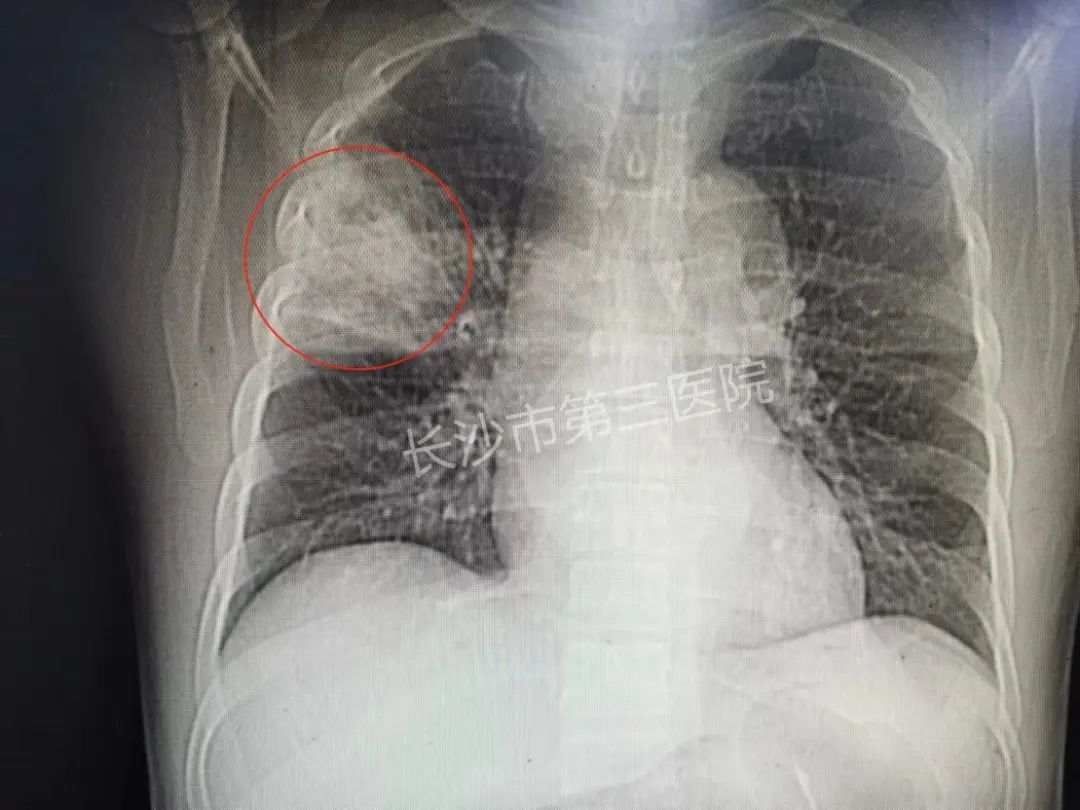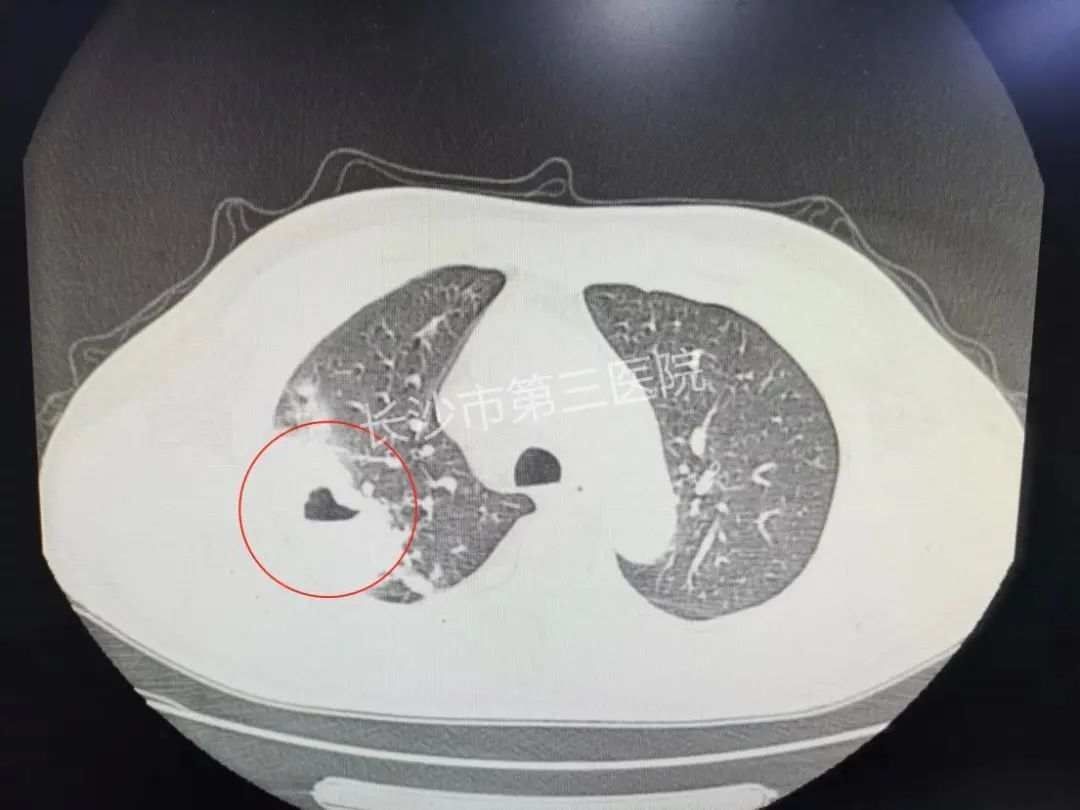Changsha 52-year-old Mr. Tang has been coughing repeatedly and expecting sputum for three months. His family advised him to go to the hospital, but he thought the cough was a small problem. Just buy some cough medicine and take it. There is no need to go to the hospital.” Make a fuss”.
Recently, Mr. Tang found that the sputum he coughed up had dark red bloodshots, and after 3 days of treatment in the hospital near his home, he did not get better, and gradually coughed up yellow purulent sputum, accompanied by dizziness and fatigue. , The mental appetite deteriorated.
Mr. Tang realized that his condition was getting worse and could no longer be delayed, so he came to the Department of Respiratory and Critical Care Medicine of the Third Hospital of Changsha City for treatment.
Fan Du, deputy director of the fifth ward, completed the relevant examinations for Mr. Tang after carefully inquiring about the medical history.
Lung CT examination showed that Mr. Tang had a 4.3*6.3*5.7 cm cavity in the posterior segment of the right upper lobe of the right lung, about the size of a child’s fist! Combined with laboratory and other tests, Fan Du considered that Mr. Tang suffered from a “lung abscess”.


“No injuries again, How can there be an abscess in the lung?” Mr. Tang was puzzled.
Fan Du explained that lung abscess is a pulmonary purulent disease caused by necrosis of lung parenchyma caused by a variety of pathogenic bacteria. abscess.
Lung abscesses can be seen at any age, and are more common in young adults. They are often caused by alcoholism, coma, vomiting, foreign body inhalation and other incentives, and can also be secondary to other lung diseases such as pneumonia and bronchiectasis.
Mr. Tang has been coughing and expecting sputum repeatedly for more than 3 months. Since he has not received standard treatment, it is very likely that the development of ordinary pneumonia caused acute lung abscess. If the acute lung abscess is not controlled in time or the treatment is incomplete, chronic lung abscess may be caused due to poor bronchial drainage, and there may be repeated moderate or massive hemoptysis, and even surgical treatment may be required.
Fan Du immediately admitted Mr. Tang to the hospital. After active anti-infective treatment, bronchoscopy and bronchoalveolar lavage treatment, Mr. Tang’s symptoms of cough and sputum were significantly relieved, and his mental appetite was significantly improved; the lung CT results after 3 weeks of re-examination showed that “the lesions in the right lung were significantly reduced, and the cavity was significantly smaller than before. Close up.”
“The cough will no longer be persistent in the future, and it will be troublesome if a small problem leads to a big problem!” Mr. Tang said before being discharged from the hospital with lingering fears.
Fan Du said that the treatment principles of acute lung abscess are anti-infection and sputum drainage. Effective drainage and expectoration can shorten the course of the disease and improve the curative effect. Fiberoptic bronchoscopy and treatment can attract pus, promote drainage and healing of the abscess cavity, and help to identify the cause and improve the etiological examination. Therefore, for patients with lung abscess, as long as the body can tolerate it, it is recommended to perform fiberoptic bronchoscopy and bronchoalveolar lavage in time, and other hidden causes such as tumor and tuberculosis can be excluded.
Acute lung abscess can be completely absorbed or only a small amount of fibrous scar remains after active and standardized treatment. Therefore, early, timely and effective treatment can improve the cure rate and reduce the morbidity and mortality.
Fan Du reminded that citizens and friends should go to the hospital in time and improve relevant examinations and symptomatic treatment once they have symptoms such as persistent cough, expectoration, blood in the sputum, and fever.